When reading, I prefer paper to electronic media. Unfortunately, a lot of my reading involves manuscripts from 8 to 100 pages in length, with the original document being an electronic PDF.
Double-sided printing works really well to resolve this issue partway. It lets me convert PDFs into paper documents, which I can focus on. This works great up to 15 pages. I print the page out and staple it. I’ve tried not-stapling the printed pages before, but then the individual papers frequently get out of order or generally all over the place.
However, for larger manuscripts I frequently found myself in a pickle:
- I don’t want to manage loose leaf pages individually.
- Staplers that can handle stapling over 15 pages don’t occur naturally, at least near the printers I’m around.
Attempting to use a stapler beyond its capacity does not end successfully.
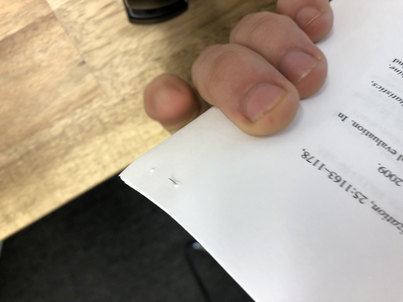
For a good deal of my life I’ve resigned myself to dealing with a reality of mediocre staplers and even more mediocre workarounds, e.g., a packet on a single topic now needs be represented by 3 independent, separately-stapled documents, which is 2 too many.
I’m confident many others also have this problem. To wit, I’d like to introduce a life hack, for all situations where you have documents of up to \(2X\) pages and staplers with penetration power rated at \(X\) pages.
The Problem
I want to staple this thick paper stack.
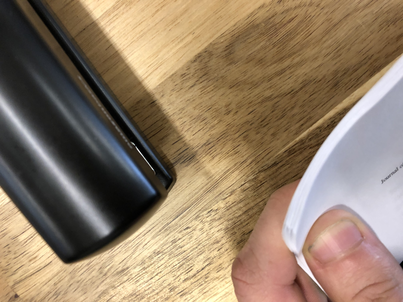
Optimality criteria.
(A) Grip strength of resulting staple.
(B) Non-obstruction of reading material.
Solution
- Staple pages \(1\) to \(X\).
- Staple pages \(X+1\) to \(2X\).
- Peel back the corner of pages \(1\) to \(\lfloor X/2\rfloor\) over the staple. Repeat for \(\lfloor 3X/2\rfloor\) to \(2X\)
- Insert the exposed corner of pages \(\lfloor X/2\rfloor +1\) to \(\lfloor 3X/2\rfloor - 1\) into the stapler, making sure the folded-away corners of the outer pages are out of the stapler’s line of fire.
- Apply the stapler to the middle pages, then fold the outer pages’ corners back up.
Results
Step 1 and 2.
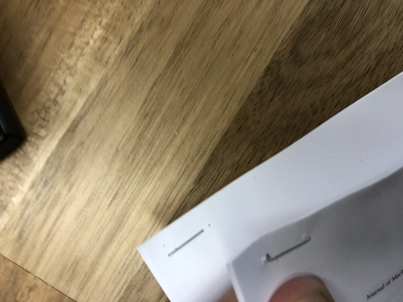
Step 3.
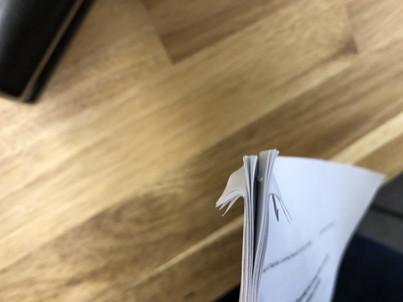
Step 4.
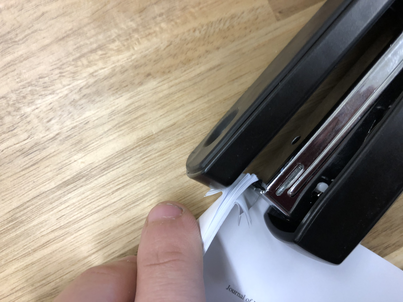
Step 5.
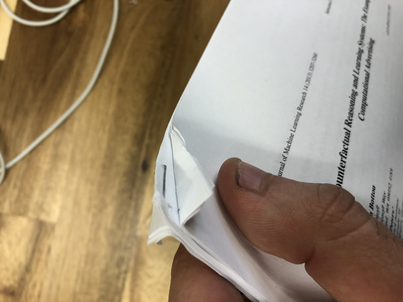
Additional results (skew angle, front, and back views).
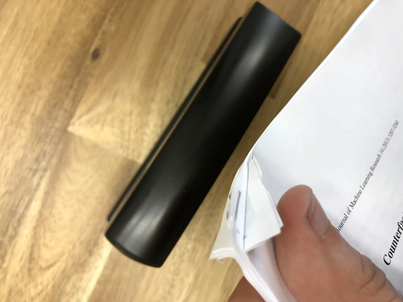
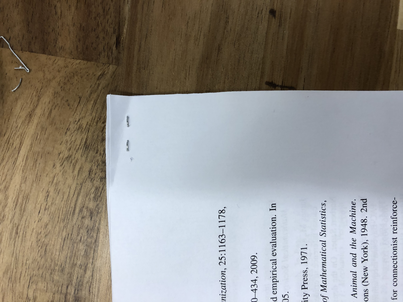
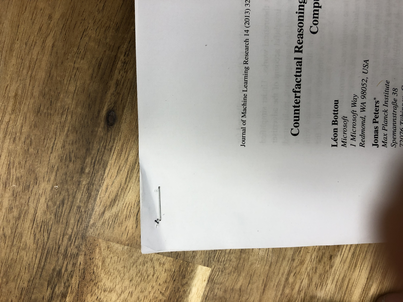
Discussion and Related Work
(A) is met due to each staple holding together at least \(X\) pages. Contrast this with related work which only staples two pages \(X,X+1\) with an intermediate staple, resulting in a single point of failure at page \(X\).
(B) UX is equivalent to a single-stapled page, as opposed to binder-clip methodology which frequently requires clipping past the margin.
Future Work
There exists a straightforward alternating iteration of our method that can be shown, by induction to apply to documents of length up to \(n X\) for any \(n\in\mathbb{N}\). We leave evaluation to future work.